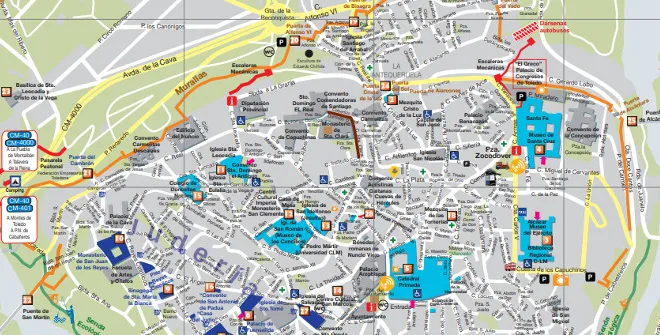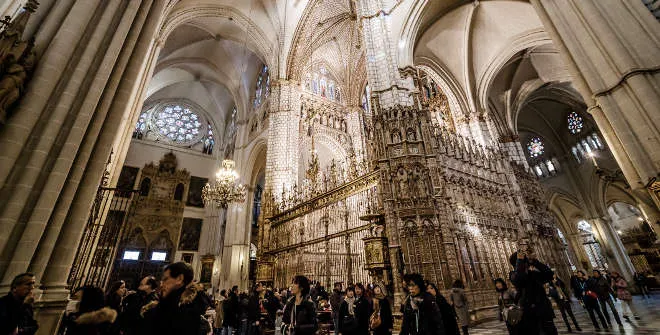Toledo
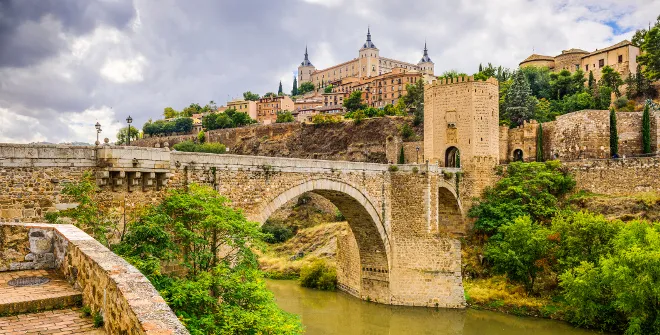
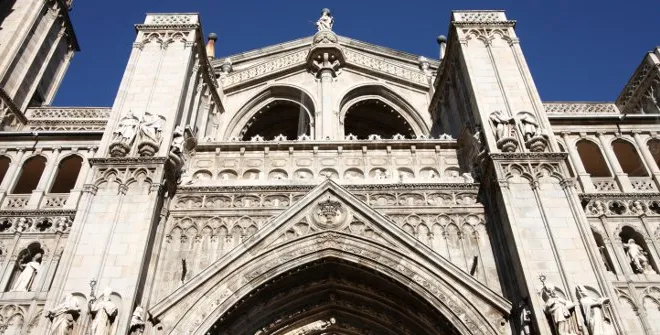
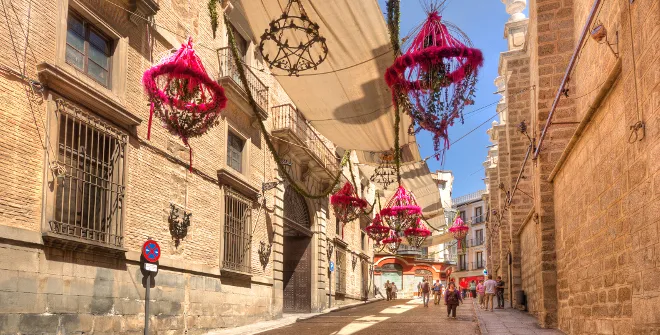
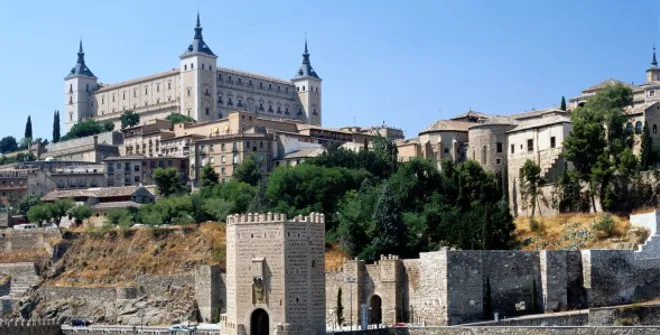
Named a World Heritage Site by Unesco in 1986, Toledo is an outstanding museum city whose rich heritage owes almost everything to the Jews, Muslims and Christians who lived there, working and observing their religion side by side.
Each and every one of the cultures and peoples who’ve passed through Toledo gave the city a present made up of a rich architectural and artistic heritage. The city walls, erected during the Roman era, were reconstructed and given their current appearance by the Arabs. Many gateways mark the route of the walls, but Puerta de la Bisagra, which leads into the historic town and bears the coat of arms of the Imperial City, is the only one to have kept its Medieval architecture.
Cristo de la Luz Mosque (tenth century)
It’s the only surviving mosque of its style from the nearly ten that originally existed in the city. It can be found just after going through Puerta de la Bisagra. The horseshoe arches extend in a way reminiscent of the Grand Mosque in Córdoba.
El Tránsito Synagogue (fourteenth century)
The façade and beautiful plastered walls hide an interior with a rectangular floor plan, crowned by a lovely coffered ceiling. At present, the synagogue houses the Sephardic Museum.
Cathedral
The Cathedral was built in the Gothic style between 1226 and 1493 on the site of a Visigothic church erected during the reign of King Reccared. The sacristy contains a valuable collection of paintings by El Greco, Luca Giordano, Van Dyck and Goya. The side chapels are works of art in themselves: Nuevos Reyes, Santiago, the choir stalls in the Renaissance style, the Mozarabic chapel, the chapter house, etc.
El Greco House Museum
Although El Greco never actually lived in this house, the museum accommodates paintings by the master from Crete, such as The Tears of Saint Peter or Christ and the Apostles.
Alcázar
Located in the upper part of town, the present-day Alcázar was a fortress under the Romans, becoming a fortified palace – the first with a square floor plan – in the Christian era. Under King Charles I of Spain, it underwent significant renovation work. Each of its façades boasts a different style and dates back to a different period: the east façade is Medieval; the west one, Renaissance; the north façade has a Plateresque design; and the south one is Churrigueresque. The Alcázar was destroyed during the French invasion and in the Spanish Civil War, to be rehabilitated later. Now it is home of the Army Museum and military facilities.
Church of Santo Tomé
Inside, it houses an artistic gem: “The Burial of the Count of Orgaz” by El Greco.
Mirador del Valle
This viewing point offers magnificent panoramic views of the river Tajo and the city’s monuments. In fact, painters such as El Greco and Picasso tried to capture its beauty.
San Martín Bridge
This bridge dates back originally to the mid-14th Century, although it was later rebuilt. It was declared a National Monument in 1921 and it offers an unbeatable spot to enjoy the setting sun of an evening.
Old documents describe Toletum in the fourth century BC as the capital of Roman Carpetania. The Alans and the Visigoths, of Iranian and Germanic descent, respectively, settled in the region after the Romans left. There began a period of political and religious splendour, followed by three centuries of decline during Muslim occupation. In 1085, King Alfonso VI ordered that this area, bathed by the river Tagus, be repopulated.
In the second half of the thirteenth century, Alfonso X the Wise turned the city into one of Europe’s major cultural hubs. During his reign, great books on philosophy and theology that had been stored in Islamic and Jewish libraries were recovered and translated at the renowned Toledo School of Translators. Around 12,000 Jews lived in Toledo in those years, where they built a considerable number of synagogues.
The Catholic Monarchs always showed a penchant for Toledo. In 1561, as the city could no longer accommodate so many official bodies, King Philip II moved the Royal Court to Madrid. Following the King’s decision, the city fell into oblivion. With the passing of time, however, the Catholic Church brought it back to life with the foundation of convents and other religious institutions.
The nineteenth century brought to Toledo Romantic artists and writers, considerable population growth, and the railway (1858). Over the second half of the twentieth century, there was another industrial boost and, in the 1980s, Toledo became the capital of the Region of Castile-La Mancha.
In Toledo, time and history go hand in hand with craftsmanship, as shown by swords, pottery and damascene ware. Sword and sabre manufacturing is aimed mainly at the tourist market segment, although orders are sometimes placed by armies from around the world.
‘Damascening’ refers to an Arabic decorative craft whereby gold or silver are inlaid into less noble but tougher materials (such as iron, bronze, steel, earthenware or porcelain). It’s used to make rings, bracelets, brooches, plates, etc. The city’s streets abound with workshops and outlets turned to small bazaars, their windows filled with black steel objects etched with gold.
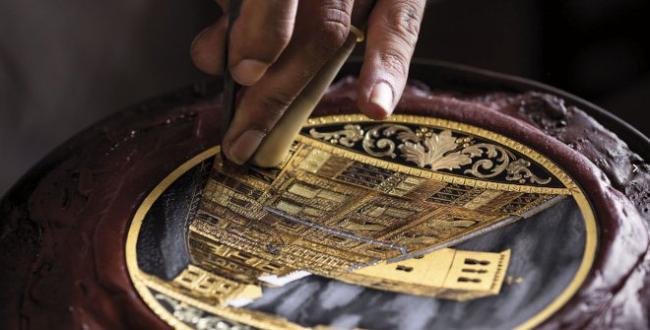
The prestige of Toledo’s cuisine is reflected in popular sayings like ‘Cocinero y cochero, tómalos de Toledo’ (‘For your driver and your cook, in Toledo you should look’). There are references to it in Lope de Vega’s play The Toledan Night, written during the Golden Age. Game is no doubt the key to local food, which also takes advantage of top-quality ingredients like olive oil, saffron and garden produce. Deer, wild boar, wood pigeon, turtledove, quail and, of course, red-legged partridge fill the plates of those ready to sample the most traditional dishes.
Also worthy of note are pisto manchego (fried vegetable hash) – made with the best veggies grown in Toledo’s gardens – and pote (peppers with eggs), two dishes that have their roots in La Mancha. However, just as the city itself is a compendium of the most variegated arts, its cuisine has successfully assimilated the Arab legacy in its desserts and pastries, marzipan being a traditional almond-based confection. Many sweets and jams originate in the city’s convents: pestiños (pastry made with flour, white wine, anise liqueur and sugar), ring-shaped rosquillas and square-shaped marquesitas (pastry with almonds, eggs and sugar). All these delicacies are usually washed down with a drop of locally produced wine: Méntrida, Yepes, Quintanar, Ocaña, and the like.
One of the restaurants where you can find typical gastronomy of the area is the Adolfo Restaurant (Hombre de Palo, 7), belonging to the Adolfo Group, with great enthusiasm for the tradition of Spanish cuisine and which offers creative and La Mancha cuisine. It is worth mentioning that the Adolfo catering group, by the chef, Adolfo Muñoz, has another restaurant in the centre of Madrid, the Terraza Cibeles.
Celebrated since the thirteenth century, the feast of Corpus Christi is the most important holiday in Toledo. Balconies get decorated with shawls, flowers and flags to revere the Monstrance of Arfe, which is carried through the streets. The procession walks along canopied alleyways, and the ground is strewn with rosemary and thyme. The parade includes big-heads and giants, Civil Guards, a processional cross, religious brethren with their banners, children who’ve just received their First Communion, clergymen, the Archbishop, local authorities and the town band.
- By car: Toledo is a 60-minute drive from Madrid if you take the A-42 motorway (former N-401 main road), and a 50-minute drive if you choose the AP-41 toll motorway.
- By bus: The journey from the Plaza Elíptica transport hub takes 70 minutes. (Bus company: ALSA.)
- By train: The AVE high-speed train from Atocha station arrives in Toledo in just 25 minutes.
For further information: Official Tourism Website Of Toledo
OTHER TRAIN EXCURSIONS
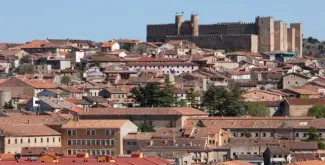
Medieval Train to Sigüenza
A wonderful and unique way of visiting a town steeped in history: 7 & 21 May, 4 & 16 June, 22 Sept, 1, 15 & 29 Oct 2022
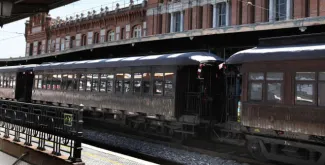
The Strawberry Train
A period train running between Madrid and Aranjuez recreates the Region of Madrid’s first rail line. Spring Season: Sat & Sun, from 22 April to 25 June.
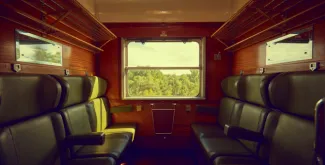
The Philip II Train
Travel from Madrid to San Lorenzo de El Escorial on a vintage train and unveil the secrets of King Philip II’s empire. Every week-end till 10 December.
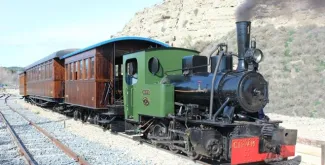
Arganda Train
Get on this vintage train whose steam locomotive pushes its way past stunning landscapes in southeast Madrid. Every Sunday, from 5 March to 28 May.
